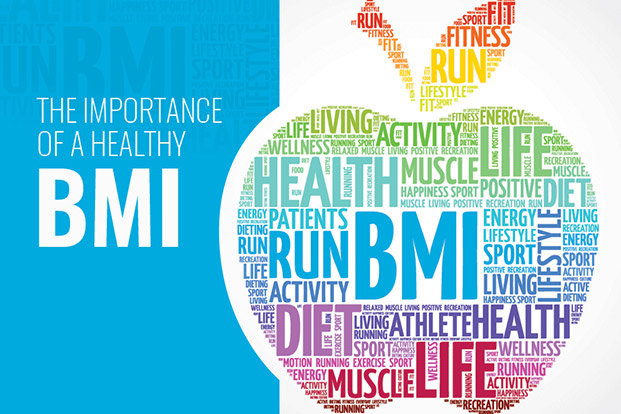What Should Be Ideal BMI
Apr 19, 2022
Body Mass Index (BMI) is a value that depends on the weight and height of an individual. The BMI is defined as the body weight divided by the square of the body height and expressed in units of kg/m2, where weight in kilogram and height in meters. BMI = Weight (kg)/Height (m)2. BMI provides simple numeric measures of a person’s thickness or thinness, allowing health professionals to discuss weight problems with their patients.

BMI is an attempt to quantify the amount of tissue mass (muscle, fat and bones) in an individual and then categorizes that person as underweight, normal weight, overweight, or obese based on that value. It is an international method of classifying a person according to body weight and their height. It is helpful to know the type of body fat i.e. subcutaneous and visceral fat. For public health action and policy making, separate cut off values have been given for Asian adult population by the WHO Expert Consultation.
Measurements of adult obesity in Asia and India:-
| Overweight | Obesity | |
| Indian Obesity Task Force (IOTF- 2004) | >23 | >25 |
| WHO Expert Consultation (2000) | >25 | >30 |
| Accepted International Classification BMI cut- offs for all purpose:- |
| Categories | Cut off value |
| Under weight | <18.5 kg/m2 |
| Normal weight | 18.5-22.9 kg/m2 |
| Over weight | 23.0-27.5 kg/m2 |
| Obesity | >27.5 kg/m2 |
| Obesity Grade I | 30-34.9 kg/m2 |
| Obesity Grade II | 35.0-39.9 kg/m2 |
| Obesity Grade III | >40.0 kg/m2 |
The BMI is excellent for identifying obesity and body fat in large populations, but they are far less reliable for determining fatness in individuals. It has been found that Indians have more body fat than other ethnic groups, both within and outside Asia. This relative increase in adiposity in Indian has led to the suggestion that the BMI cut off for non communicable disease such as obesity should be reduced for Indians to about 23 kg/m2 or lower.
BMI is used differently in children. It is difficult to measure overweight or obesity in children and adolescents, because they grow and mature at different rates. It is calculated in the same way as per adult but then compared to typical values for other children of the same age. Instead of comparison again fixed thresholds for underweight and overweight, the BMI is compared against the percentile for children of same sex and age.
A BMI that is less then 5th percentile is considered underweight and above the 95th percentile is considered obese. Children with BMI between 85th and 95th the percentile are considered to be overweight. Thus, BMI plays major role to identify the physical fitness for all age groups.









